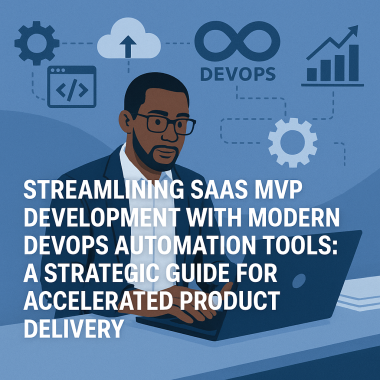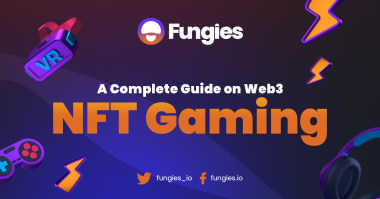This document synthesizes the analysis of Hugging Face libraries, OpenRouter.ai, n8n, and Elest.io, focusing on their capabilities, strengths, weaknesses, and ideal use cases from the perspective of an Indie Hacker, particularly one using Next.js for frontend development. The emphasis is on tools that are budget-friendly, require minimal operational overhead, and can scale with traction.
1. Hugging Face Libraries
Analyzed Libraries: transformers, datasets, diffusers, accelerate, PEFT, AutoTrain.
Overall for Indie Hackers: Hugging Face offers an unparalleled ecosystem for AI/ML development. For Indie Hackers, the key is leveraging pre-trained models and tools that minimize the need for extensive training infrastructure and expertise.
- Transformers (and Transformers.js):
- Strengths: Access to a vast library of state-of-the-art pre-trained models for NLP, Computer Vision, Audio, and Multimodal tasks.
transformers.jsallows running many of these models directly in the browser (or Node.js environment like Next.js API routes), which is excellent for client-side AI, privacy, and reducing server costs for inference. Easy fine-tuning capabilities with the Python library. - Weaknesses: Larger models can be slow or resource-intensive in the browser. Fine-tuning still requires Python knowledge and some compute resources (though PEFT helps).
- Ideal Use Cases (Indie Hacker & Next.js):
- Client-side text summarization, sentiment analysis, translation, or question answering in a Next.js app using
transformers.js. - Serverless NLP functions (Next.js API routes) for lightweight tasks.
- Rapidly prototyping AI features with pre-trained models.
- Fine-tuning smaller models on custom datasets for niche tasks.
- Client-side text summarization, sentiment analysis, translation, or question answering in a Next.js app using
- Budget/Ops/Scalability:
transformers.jsfor client-side inference is very budget-friendly (no server costs for inference). Server-side use in Next.js API routes on Vercel can scale well for moderate loads. Fine-tuning requires some budget for compute (e.g., Google Colab, cloud VMs, or AutoTrain credits).
- Strengths: Access to a vast library of state-of-the-art pre-trained models for NLP, Computer Vision, Audio, and Multimodal tasks.
- Datasets:
- Strengths: Easy access to thousands of datasets. Efficient data loading and processing, crucial for fine-tuning or evaluating models.
- Weaknesses: Primarily a Python library, so direct use in a Next.js frontend is limited, but essential for the model preparation phase.
- Ideal Use Cases: Preparing data for fine-tuning models that will later be used in a Next.js application.
- Budget/Ops/Scalability: Free to use. Scalability is excellent for data handling.
- Diffusers:
- Strengths: State-of-the-art diffusion models for image, audio, and 3D generation. Relatively easy to use for generating creative assets or AI-powered features.
- Weaknesses: Computationally intensive. Running these models usually requires a GPU, making direct client-side or serverless (cheaply) difficult. Best used via dedicated inference endpoints or self-hosted with GPU.
- Ideal Use Cases: Generating unique images for a Next.js app (e.g., user avatars, product mockups, blog post illustrations) by calling a backend service that runs diffusers.
- Budget/Ops/Scalability: Can be expensive if relying on GPU cloud instances for self-hosting. Using third-party inference services for diffusion models might be more cost-effective initially. Ops can be high for self-hosting GPUs.
- Accelerate & PEFT (Parameter-Efficient Fine-Tuning):
- Strengths:
Acceleratesimplifies distributed training and inference across various hardware.PEFTsignificantly reduces the computational cost and memory requirements for fine-tuning large models by only training a small number of extra parameters (e.g., LoRA). - Weaknesses: Still requires Python and understanding of training concepts.
- Ideal Use Cases: Indie Hackers wanting to fine-tune large language or vision models on custom data without needing massive GPU resources. PEFT makes fine-tuning accessible.
- Budget/Ops/Scalability: PEFT dramatically lowers the budget needed for fine-tuning. Accelerate helps utilize available hardware efficiently. Ops are moderate, focused on the training script.
- Strengths:
- AutoTrain:
- Strengths: No-code/low-code platform for automatically training state-of-the-art models for various tasks (text classification, image classification, etc.). Handles hyperparameter tuning and model selection.
- Weaknesses: Less control than manual training. Can have costs associated with usage on Hugging Face infrastructure.
- Ideal Use Cases: Indie Hackers without deep ML expertise who need custom models. Quickly training a model for a specific task to integrate into their Next.js app.
- Budget/Ops/Scalability: Can be budget-friendly for initial models, especially with free tiers or credits. Minimal ops. Models can be deployed to Hugging Face Inference Endpoints for scalability.
Hugging Face Summary for Indie Hackers: Leverage transformers.js for client-side/edge AI. Use AutoTrain or PEFT for cost-effective custom model training. Consider Hugging Face Inference Endpoints for deploying custom or pre-trained models without managing infrastructure. For tasks requiring large models (especially diffusion), carefully evaluate self-hosting costs vs. API services.
2. OpenRouter.ai
Overall for Indie Hackers: A powerful API gateway that simplifies access to a multitude of LLMs from various providers, making it excellent for experimentation, flexibility, and avoiding vendor lock-in.
- Strengths:
- Unified API: Single integration point for hundreds of models (GPT-4, Claude, Mixtral, Llama, etc.).
- Easy Model Switching: Change models by altering a single string parameter in the API call.
- OpenAI SDK Compatibility: Drop-in replacement for OpenAI SDK, easing migration.
- Simplified Billing: Consolidated billing for all model usage.
- Access to Diverse Models: Includes open-source and proprietary models, some without direct provider waitlists.
- Model Discovery & Ranking: Helps find and compare models.
- Weaknesses:
- Cost Overhead: Adds a small margin on top of base model provider costs.
- Potential Latency: An extra hop in the network, though usually minimal.
- Dependency: Relies on OpenRouter.ai being operational.
- Feature Lag: Newest provider-specific features might take time to be exposed.
- Ideal Use Cases (Indie Hacker & Next.js):
- Rapidly A/B testing different LLMs for a feature in a Next.js app.
- Offering users a choice of underlying LLMs.
- Dynamically selecting models based on cost/performance for different tasks.
- Building applications that need access to models from multiple providers without multiple integrations.
- Integrating with Next.js API routes to call various LLMs for backend processing.
- Budget/Ops/Scalability: Budget-friendly due to pay-as-you-go and easy switching to cheaper models. Minimal ops (it’s a managed API). Scales with your usage, subject to OpenRouter and underlying provider limits.
OpenRouter.ai Summary for Indie Hackers: Highly recommended for accessing diverse LLMs. The flexibility and ease of switching models are invaluable for Indie Hackers to find the best cost/performance balance. The slight cost overhead is often offset by development speed and flexibility.
3. n8n (Workflow Automation Tool)
Overall for Indie Hackers: A versatile and powerful workflow automation tool, especially attractive due to its self-hosting option and developer-friendliness.
- Strengths:
- Self-Hostable & Fair-Code: Full control over data and potentially lower costs at scale.
- Visual Node-Based Editor: Intuitive for building complex workflows.
- Extensive Integrations: Connects to hundreds of apps, including AI services (OpenAI, Hugging Face, Langchain, vector DBs).
- Developer-Friendly: Allows custom JavaScript code in nodes, custom node creation.
- Powerful Data Handling & Logic: Can manage complex data transformations and conditional logic.
- Webhook Triggers & API: Easy to integrate with Next.js applications.
- Weaknesses:
- Learning Curve: Advanced features and complex data mapping can take time to master.
- Self-Hosting Responsibility: If self-hosted, requires ops for setup, maintenance, and security (though Elest.io can mitigate this).
- Resource Intensive (Self-Hosted): Complex workflows can consume server resources.
- Ideal Use Cases (Indie Hacker & Next.js):
- Automating backend processes triggered by Next.js frontend actions (via webhooks): lead enrichment, customer support ticket processing, content moderation.
- Integrating AI models (via OpenRouter or direct) into business workflows: summarizing text, categorizing data, generating reports.
- Scheduled tasks: sending email digests, syncing data between services.
- Creating no-code/low-code backends for Next.js applications for specific tasks.
- Budget/Ops/Scalability: Self-hosted n8n is very budget-friendly (pay for server only). Ops are moderate for self-hosting, minimal if using n8n Cloud or a managed host like Elest.io. Scales well, especially when self-hosted on appropriate infrastructure.
n8n Summary for Indie Hackers: An excellent choice for Indie Hackers needing robust workflow automation, especially if they prefer self-hosting for cost and data control. Its AI integration capabilities make it a strong contender for building AI-powered automations that can be triggered from a Next.js app.
4. Elest.io
Overall for Indie Hackers: A managed DevOps platform that dramatically simplifies deploying and managing open-source software, making self-hosting accessible even for those with limited DevOps expertise.
- Strengths:
- Simplified Deployments: One-click deployment for 350+ open-source apps (including n8n, Supabase, Ollama, FlowiseAI, Dify).
- Reduced DevOps Overhead: Handles server setup, configuration, updates, backups, security.
- Choice of Cloud Providers: Deploy on various IaaS providers (DigitalOcean, AWS, Hetzner, etc.) or on-premise.
- Predictable Pricing: Clear monthly costs covering compute and management.
- Dedicated Instances: Ensures resource isolation and security.
- Weaknesses:
- Management Fee: Adds a cost on top of the base cloud provider VM price.
- Limited Customization (Potentially): While providing access, deep customization of the underlying managed service might be restricted compared to manual setup.
- Catalog Dependent: Relies on Elest.io supporting the specific open-source software version you need.
- Ideal Use Cases (Indie Hacker & Next.js):
- Easily self-hosting backend services like n8n, Supabase, or AI tools (Ollama, LocalAI, Dify) that support a Next.js frontend.
- Bootstrapped founders who want the benefits of self-hosting (cost, control) without the DevOps burden.
- Quickly setting up databases, authentication services (like Supabase), or workflow engines.
- Deploying pre-configured AI stacks (e.g., Ollama + Open WebUI) for internal use or as a backend for AI features.
- Budget/Ops/Scalability: Budget-friendly compared to hiring DevOps or using more expensive fully managed SaaS alternatives for each tool. Significantly reduces ops. Scalability is primarily vertical (upgrading VM size), which is often sufficient for Indie Hackers initially.
Elest.io Summary for Indie Hackers: A game-changer for Indie Hackers wanting to leverage powerful open-source tools without getting bogged down in server management. Ideal for hosting the backend components (n8n, Supabase, self-hosted LLMs via Ollama) of the proposed stack, while the Next.js frontend can be hosted on Vercel.
Overall Indie Hacker Perspective on the Tools:
- Budget-Friendly:
- Hugging Face: Free models,
transformers.js(client-side),PEFTandAutoTrain(cost-effective training). - OpenRouter.ai: Pay-as-you-go, easy to switch to cheaper models.
- n8n: Free self-hosting (server costs only).
- Elest.io: Makes self-hosting affordable by reducing DevOps costs; choose budget cloud providers.
- Hugging Face: Free models,
- Minimal Ops:
- Hugging Face: Inference Endpoints, AutoTrain,
transformers.jsare low-ops. - OpenRouter.ai: Fully managed API, zero ops.
- n8n: Cloud version is zero ops; self-hosted via Elest.io is minimal ops.
- Elest.io: Core benefit is minimizing ops for self-hosted services.
- Hugging Face: Inference Endpoints, AutoTrain,
- Scales with Traction:
- Hugging Face: Inference Endpoints scale; client-side scales with users.
- OpenRouter.ai: Scales with API usage.
- n8n: Self-hosted can scale with server resources; Cloud version scales.
- Elest.io: Services can be scaled by upgrading VM resources.
This combination of tools offers a powerful, flexible, and cost-effective stack for Indie Hackers to build and scale AI-powered applications with a Next.js frontend.






